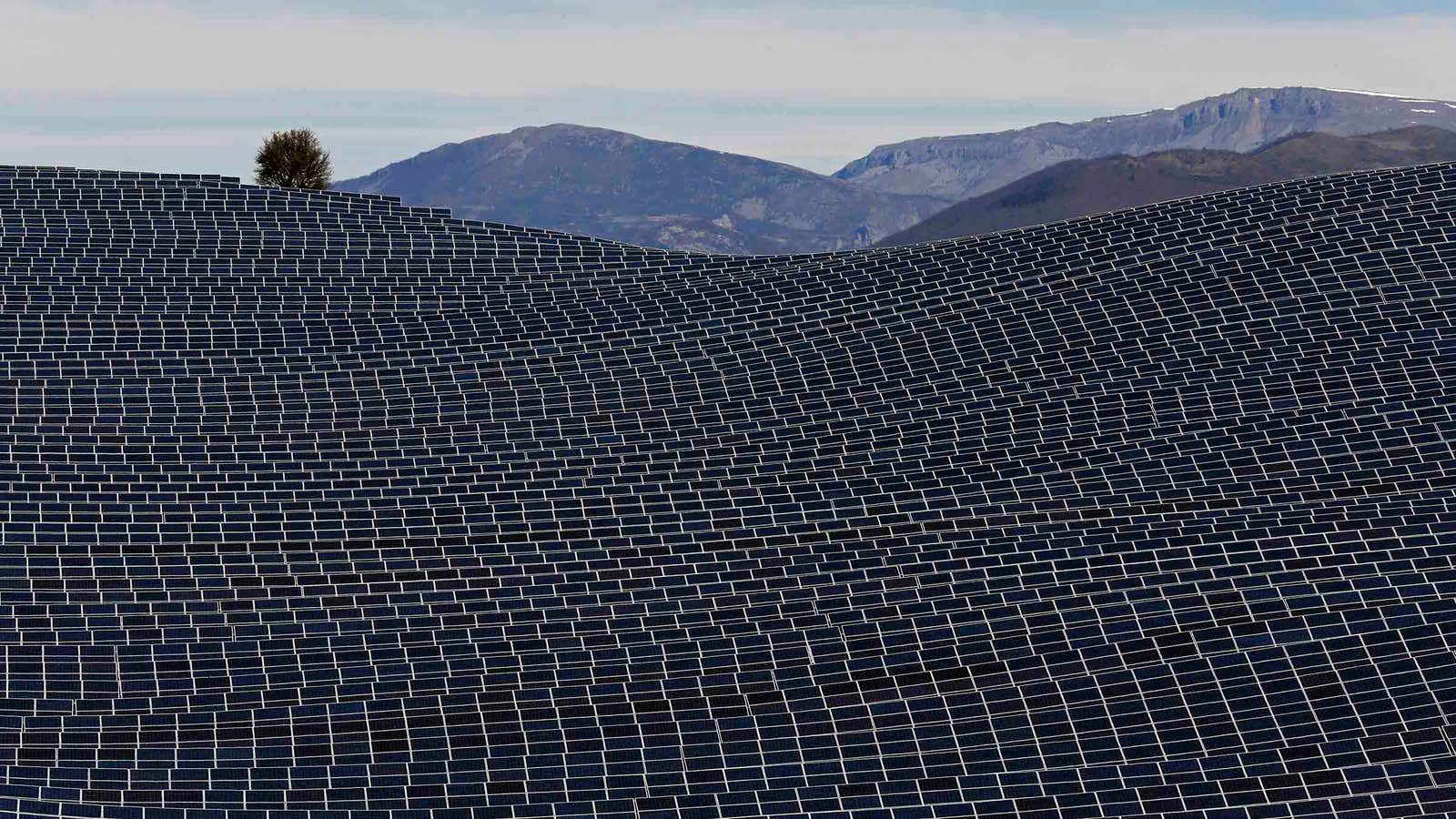The dream of a low-carbon future thanks to nuclear power is already looking dated. The two most populous countries in the world—China and India—plus Japan, Germany, Spain, the Netherlands, Mexico, and Brazil already generate more electricity from (non-hydro) renewable sources than they do from nuclear, according to a global nuclear industry report (pdf). That’s 45% of the world’s population that rely on wind, solar, and other green energy more than they do on radioactive atoms.
And renewables are far outstripping nuclear in the growth of power capacity, too. Between 1997 and 2014, the world added an average of 879 terawatt hours of solar and wind power every year, compared to nuclear’s 147:
None of this is to say that nuclear power is completely on its way out. It’s far better at delivering predictable amounts of electricity, whereas wind and solar farms can only generate electricity when weather conditions permit. That means that for all the capacity (or potential energy) a wind farm has, the actual amount of electricity it will produce will be smaller. A nuclear plant with the same upper limit for generating electricity will, over time, typically generate twice the actual electricity as the wind farm.
But the trend toward more renewable power will likely continue for some time. First, global opinion on nuclear energy soured after the Fukushima disaster in Japan, and as a result plenty of potential nuclear power plants aren’t getting built. Power-hungry China, for instance, is slow to approve new nuclear power plants due to both government and public safety concerns. At the same time, though, it is investing heavily in wind power.
And then there’s Tesla, the electric car manufacturer led by Elon Musk. It announced earlier this year that it’s working on a battery that can contain enough electricity to power a house. That could be a major breakthrough in the effectiveness of renewable energy, as it would create the ability to store power whenever it can be generated, to be used whenever it is needed, almost eliminating the current problem of reliability.
